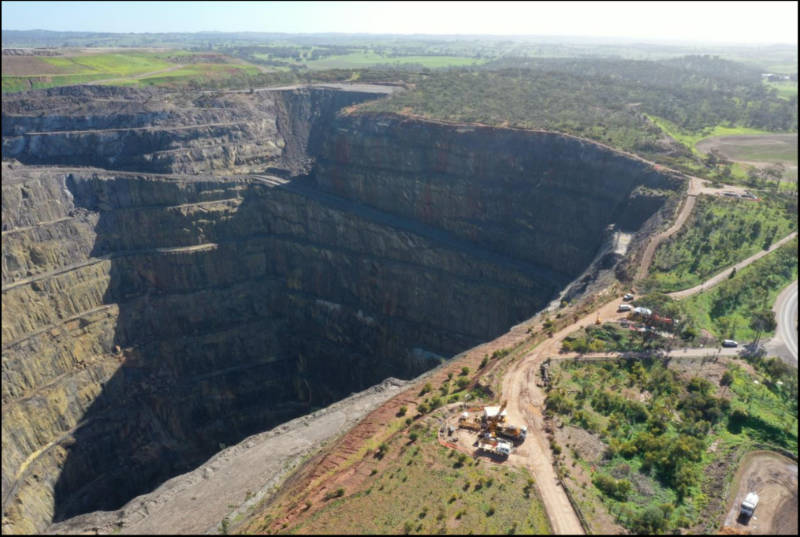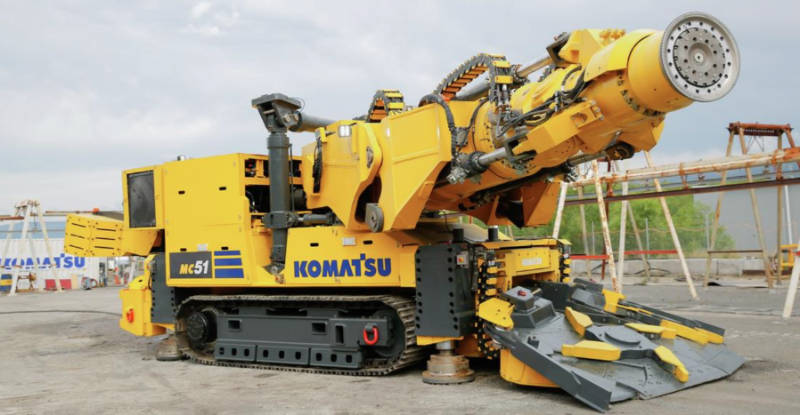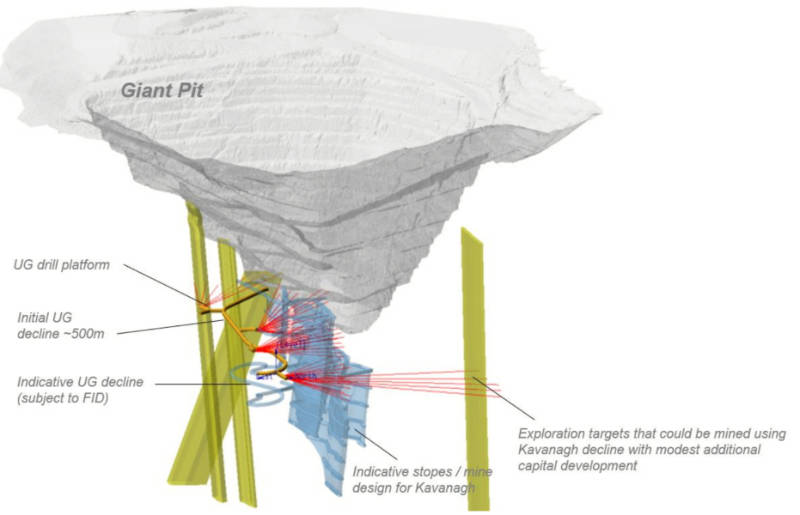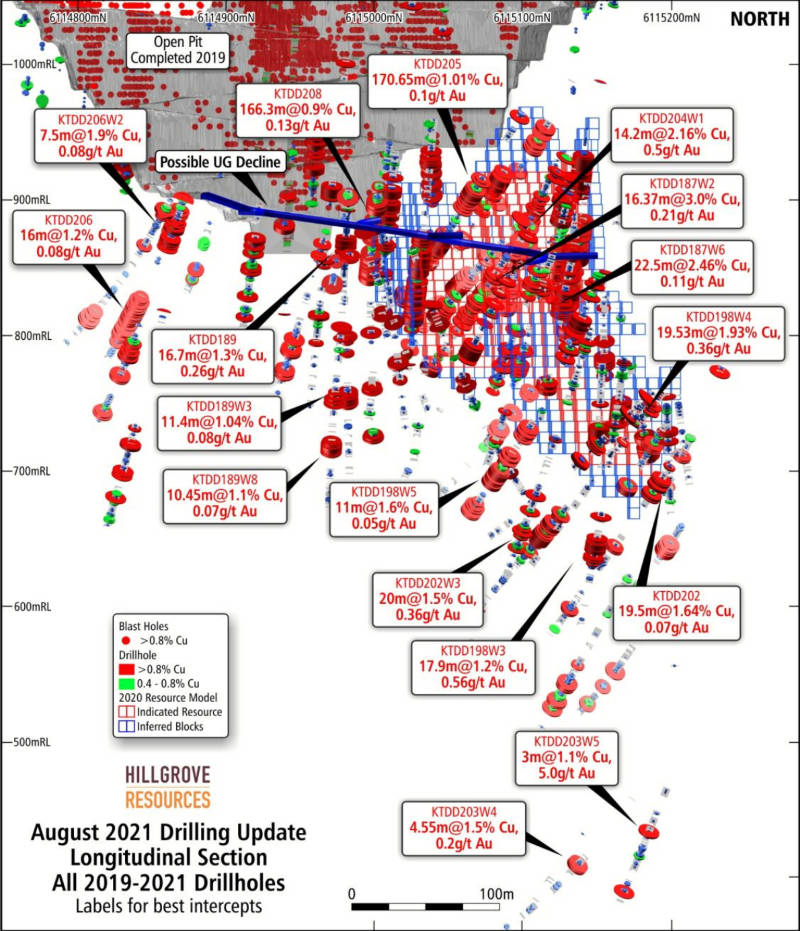Hillgrove is the low-cost, low-risk copper developer to watch

Pic: Schroptschop / E+ via Getty Images
Most junior resources companies must go through the arduous process of exploring their projects, getting them permitted, securing funding, and completing development work before ever seeing the fruits of their labour.
Hillgrove Resources (ASX:HGO) is not most companies.
The company owns and operates the Kanmantoo copper-gold mine in South Australia that produced 137,000 tonnes of copper in concentrate from a series of open pits between 2011 and 2020.
During this time, it noted that all of the mined lodes were very steeply dipping and have continued beyond the base of the pits, the deepest of which reached a depth of 360m.
This clear continuation of mineralisation made the company’s decision to pivot towards underground mining an obvious one.
Speaking to Stockhead, managing director Lachlan Wallace noted that drilling from the base of the pits to determine if a viable underground mine had been very positive to date, highlighting that not only do the lodes extend with sufficient widths and grades to support an underground mine, they go at least 500m below the base of the open pit.

This has served to define a resource of 2.21 million tonnes grading 1.56% copper, 0.32 grams per tonne (g/t) gold and 4.1g/t silver along with a conceptual exploration target of between 8Mt and 16Mt at 1% to 2% copper and 0.2g/t to 0.4g/t gold.
Given the results, it is no surprise why he considers the move to underground mining to be effectively a low-cost and low-risk restart of the Kanmantoo operation with a different mining method.
“Same geology, same metallurgy – and we are in this strong copper demand market, which will remain high as the world continues to decarbonise,” Wallace explained.
“The site is fully permitted, we enjoy strong community support, all the infrastructure we need is in place, we have a 3.5Mtpa process facility and operating and permitted tailings dam, which has the capacity to take all the underground materials.”
He added that the presence of a processing plant that is commissioned, operating and well maintained reduced the capital hurdle by multiple years and multiple hundreds of millions of dollars.
“Having an oversized plant is a huge benefit because it means that as copper prices continue to move upwards, it enables us to consider reducing the head grade that we feed into the mill and materially increase the amount of copper we are producing without having to undergo any further capital investment into the process facility.”
Underground decline
Deep exploration drilling does have its issues, chief of which is the cost of drilling as the holes get deeper.
This is where the South Australian government’s decision to award Hillgrove a $2m grant to trial a new underground mining technology that is being developed in Australia by giant earthmoving and mining equipment manufacturer Komatsu comes into play.
The trial will use Komatsu’s MC51 continuous mining machine and its DynaCut mechanical cutting technology to develop a portal and roughly 500m underground decline at Kanmantoo.

This will focus on demonstrating the commercial viability of the machine, which has the potential to revolutionise underground mine development by making underground operations safer, faster and more cost effective, and trial new materials handling and ground support processes.
Hillgrove sees a couple of benefits from this trial, the first of which is the development of underground drilling platforms that will enable it to continue growing the resource through a combination of surface and underground drilling at a lower cost.
“We can continue to increase the size of the resource as well as infill to get to a higher level of geological confidence in preparation for a mining restart next year through these underground platforms that are created with this new mining technology,” Wallace noted.
He added that the South Australian grant and Komatsu’s contribution by putting its machine into operation meant that the company could put in the decline for very little cash outflow in the initial term.
“We are also accelerating the future ore production because this 500m development drive will also double in the future as the underground mining infrastructure,” he explained.
“As we complete the drilling, complete the subsequent studies and reach a final investment decision, it is a very short period of time and relatively low cost to be able to then cut across to the ore lodes and begin first copper production.”
Drilling is expected to be completed in the first half of 2022 with Wallace expecting to be in position to make a final investment decision by the middle of the same year that will in turn be followed a few months of capital development prior to production starting before the end of 2022.

Exploration building copper resource
Wallace also touched on the very recent 166.3m intersection grading 0.9% copper and 0.13g/t gold from 332m downhole, noting that it was not only an excellent hit that Hillgrove did not expect but also came about 70m south of a previous hit of 170m at a bit over 1% copper.
“We now have these nice wide copper zones and they provide us with an enormous opportunity to really expand the size of the resources sitting directly below the base of the open pit,” he explained.
“We couple this with some excellent hits nearby including 22.5m at 2.5% and 16m at 3%, and this is what is going to underwrite the initial development of the Kanmantoo underground.”
Hillgrove has already carried out over 17km of drilling both down dip and along strike of the main Kavanagh zones to expand resources.
Results so far have given the company a high degree of confidence that it will add more to its resource with Wallace noting that the 68 holes drilled to date have delivered 92 intersections of more than 3m with more than 0.6% copper while just six holes have returned sub-grade copper.

And there’s more to go.
“To a degree, we understand the geology very well but it is underexplored,” Wallace noted.
“All these areas are open at depth and there is no structural control that we are aware of that would suggest that these cut off at depth.
“We also have a number of opportunities in some nearby lodes that have been mined in the past under the Nugent pit, which can be operated from the same decline infrastructure, and North Kavanagh.
“All of these areas do have drilling results, they do continue and are all open at depth and along strike, providing enormous opportunities to add tonnes with additional drilling and this is what we plan to do over the next 6-9 months to increase the mining inventory ahead of the restart next year.”
Wallace adds that what sets Hillgrove aside from its peers is that many of them still have infrastructure to build.
“We are a company that can actually take advantage of the current increase in copper price and continue to produce into that bullish copper market as we build the underground and continue its future.”
Related Topics

UNLOCK INSIGHTS
Discover the untold stories of emerging ASX stocks.
Daily news and expert analysis, it's free to subscribe.
By proceeding, you confirm you understand that we handle personal information in accordance with our Privacy Policy.








